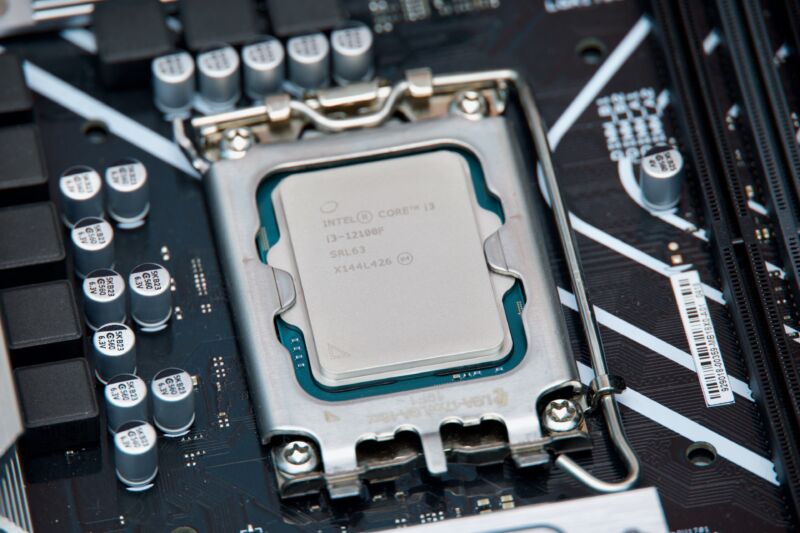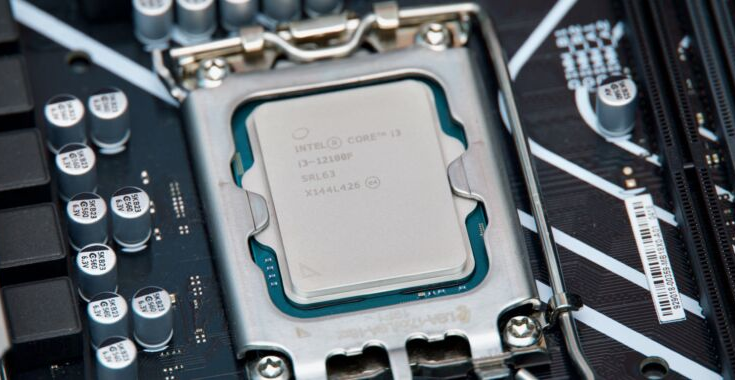
Andrew Cunningham
It hasn’t been a great time to build a computer on a budget. Some of that is due to ongoing supply issues and a particularly nasty GPU shortage (albeit one that may be very gradually easing). And some of it is because the products on offer haven’t improved much lately—Intel’s best budget and midrange processors were stuck with an aging architecture because of manufacturing problems, and AMD chose to focus on high-end products instead.
In anticipation of AMD’s new sub-$200 processors, today we’re looking at a pair of Intel’s best sub-$200 processors in years. The Core i5-12400 ($210 with a GPU, $180-ish without one) is a six-core processor that offers great performance for budget-minded gaming PCs and anyone who wants to do light photo and video editing work without spending tons of money. And the Core i3-12100 (around $150 with a GPU or $120 without) is a quad-core chip that can handle games when paired with a GPU but is ideally suited for browsing, office work and schoolwork, video calls, and anything else you might want from a basic desktop in a home office setup.
Performance and power efficiency
We’re primarily comparing the Core i3-12100 and Core i5-12400 to their immediate predecessors: the Core i3-10100, the Core i5-10400, and the Core i5-11400. We also threw in the Ryzen 5 3600 as a comparison point, which used to sell for $200 but hasn’t been widely available at that price for a while; comparisons to the newer Ryzen 5 5500 and 5600 CPUs will follow after those chips have been released.
Some details on our testing systems:
We opted to use a B660-based DDR4 motherboard to do all of our testing on these CPUs since it’s the kind of board you would pair these chips with if you were actually building a budget PC. You could always choose to put a Core i3 or i5 chip in an expensive Z690 motherboard with DDR5 RAM, but you’d be paying a lot more money for little to no return on that investment. For the sake of consistency, all CPUs were also paired with a Vetroo V5 CPU fan, a budget air cooler that provides a step up from the in-box fan included with these CPUs.
Andrew Cunningham
Andrew Cunningham
Alder Lake’s single-core performance is impressive regardless of which of these CPUs you buy; the new chips easily outpace their 10th- and 11th-generation counterparts and the Ryzen 5 3600. That’s important for keeping general performance (and most games) feeling zippy.
Andrew Cunningham
Andrew Cunningham
Andrew Cunningham
Andrew Cunningham
As for multicore performance, notice that the quad-core Core i3-12100 either beats or comes close to beating the six-core Core i5-10400 in our Cinebench and Handbrake tests—there are fewer cores, but they’re much faster. The Core i5-12400 also handily beats the previous-generation Intel CPUs and the Ryzen 5 3600 in these tests. But if you’re doing a lot of CPU-bound rendering tasks or video editing, note that there is a significant gap between the i5-12400 and the i7-12700, especially when you raise the power limits of the i7. Two extra P-cores and four E-cores make it much more capable when you’re using all of those cores at the same time.
Andrew Cunningham
Andrew Cunningham
Andrew CunninghamA (very) rough approximation of the amount of power each system used to run our Handbrake encoding test. If you stick to Intel’s default power limits, then more cores = more efficient, but you can see how lifting the power limits on the i5-11400 and i7-12700 reduces efficiency to save time.
Andrew Cunningham
When comparing power efficiency, it’s worth noting that when using Intel’s stock power settings, full system power consumption in our Handbrake encoding test isn’t that different when you’re using any of these processors. That means that whatever system can get the work done the most quickly is usually the most efficient. The only time that curve is disturbed is when you raise the power limits on the higher-end processors, which gets work done quickly at the cost of efficiency.
You’ll also note, as we did in our Mac Studio review, the relative inefficiency of Intel’s midrange CPUs compared to Apple’s M1 chips. Intel’s CPUs are fast (the M1 traded blows with the Core i3 throughout our testing), but Apple’s chips use much less power. Granted, if you’re buying a PC primarily to play games, it doesn’t matter how good the M1 is because it can’t run Windows or the games that require Windows. But it’s worth keeping the comparison in mind when considering Intel’s overall market position and its recent loss of Apple as a customer.



